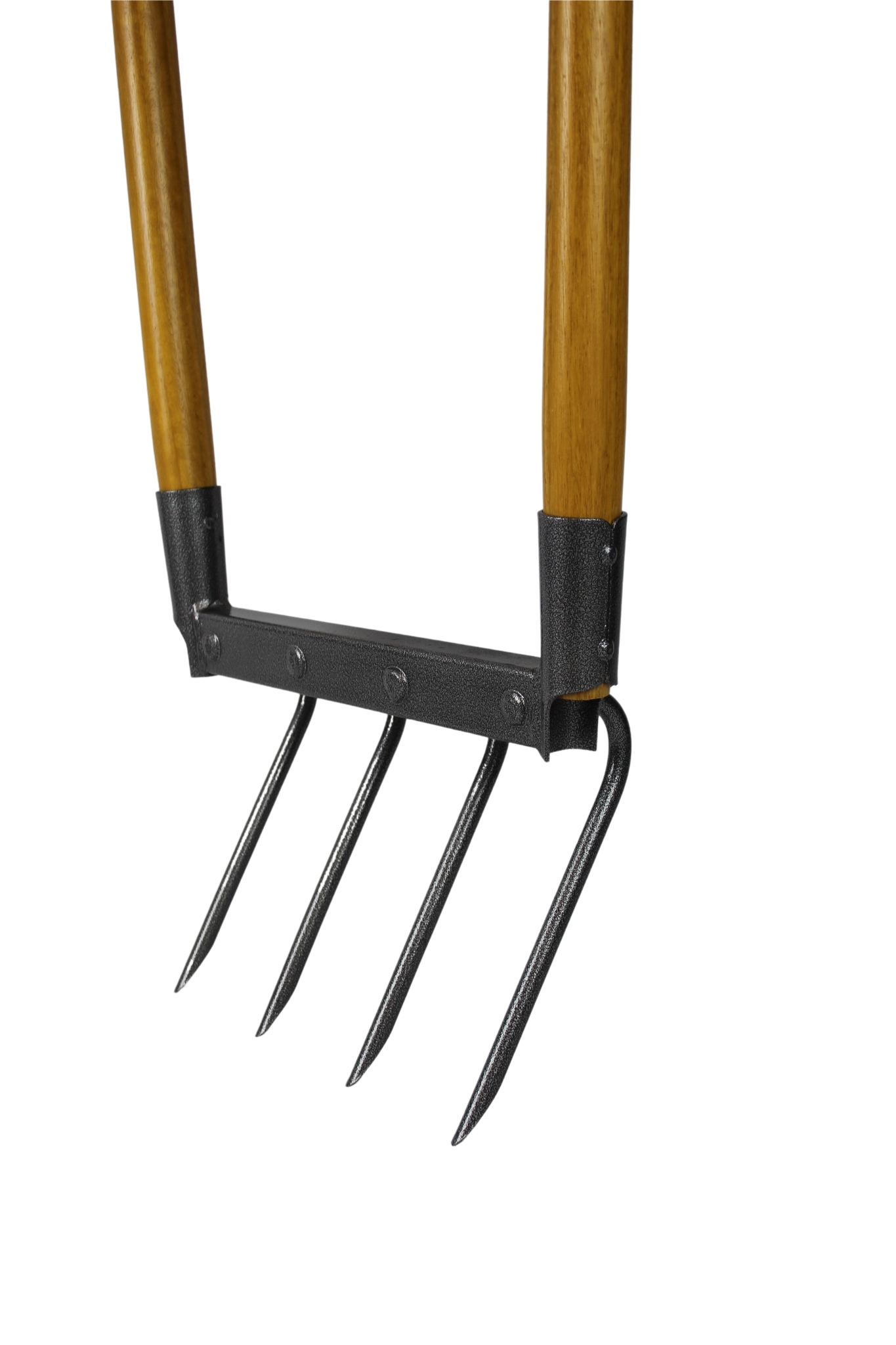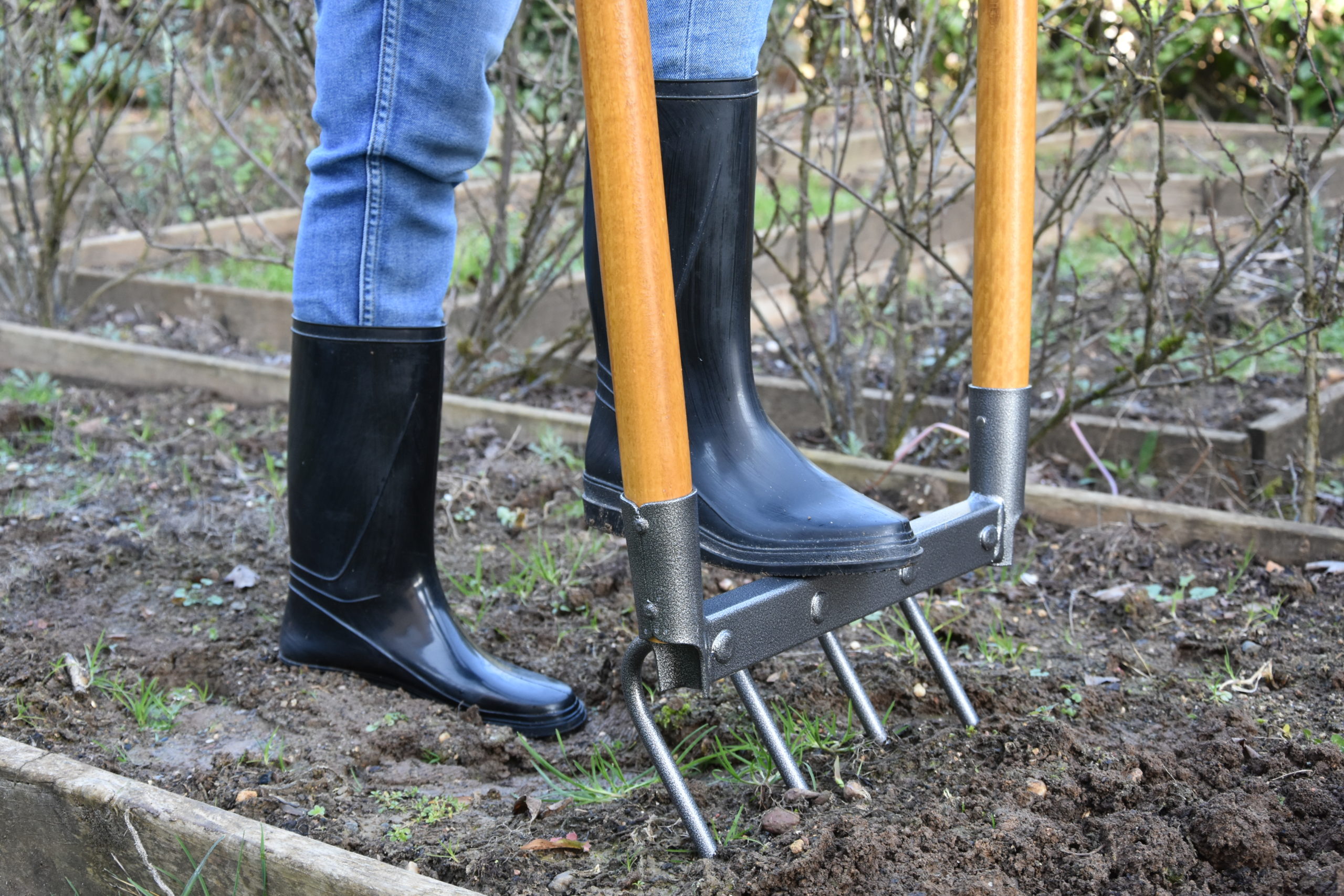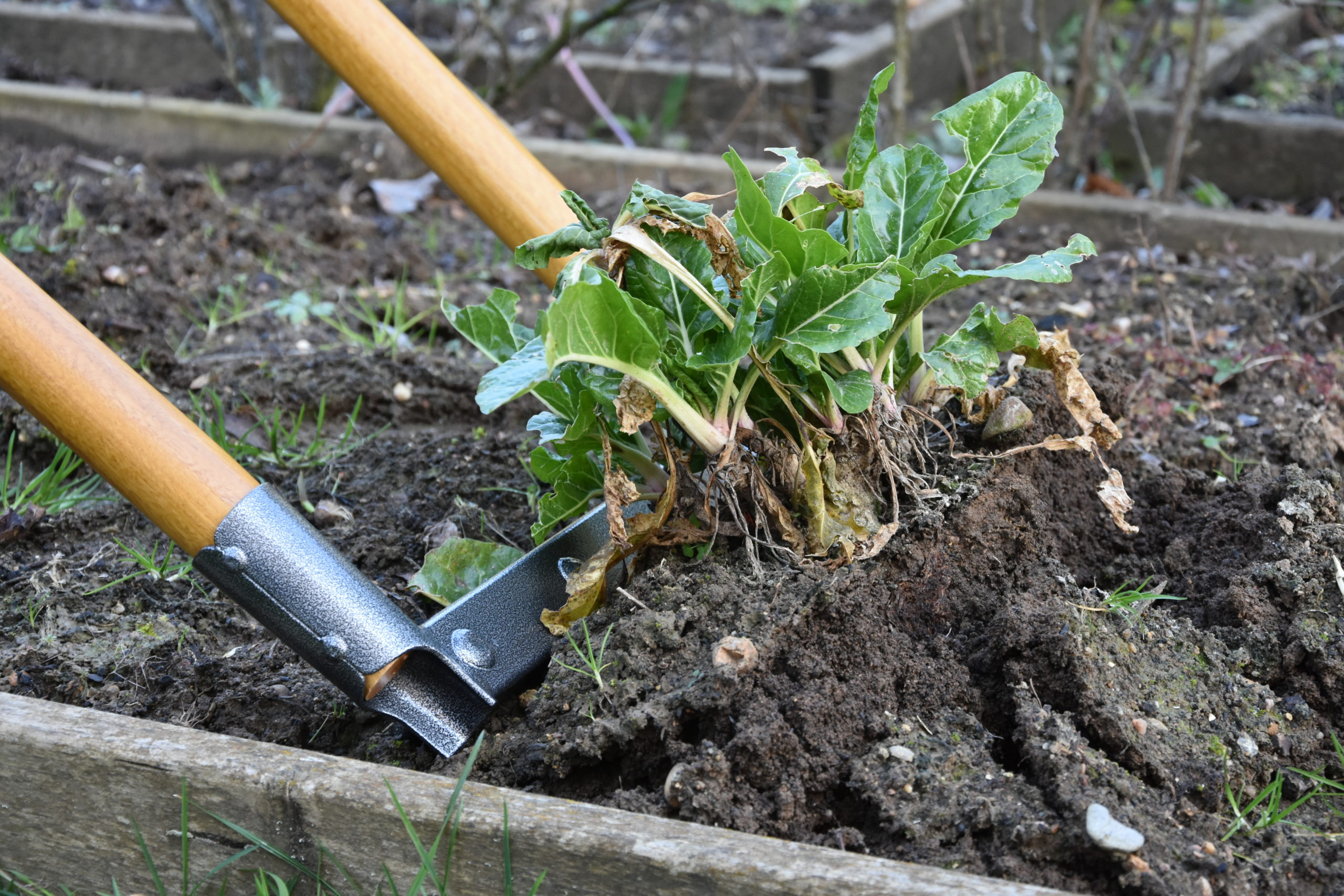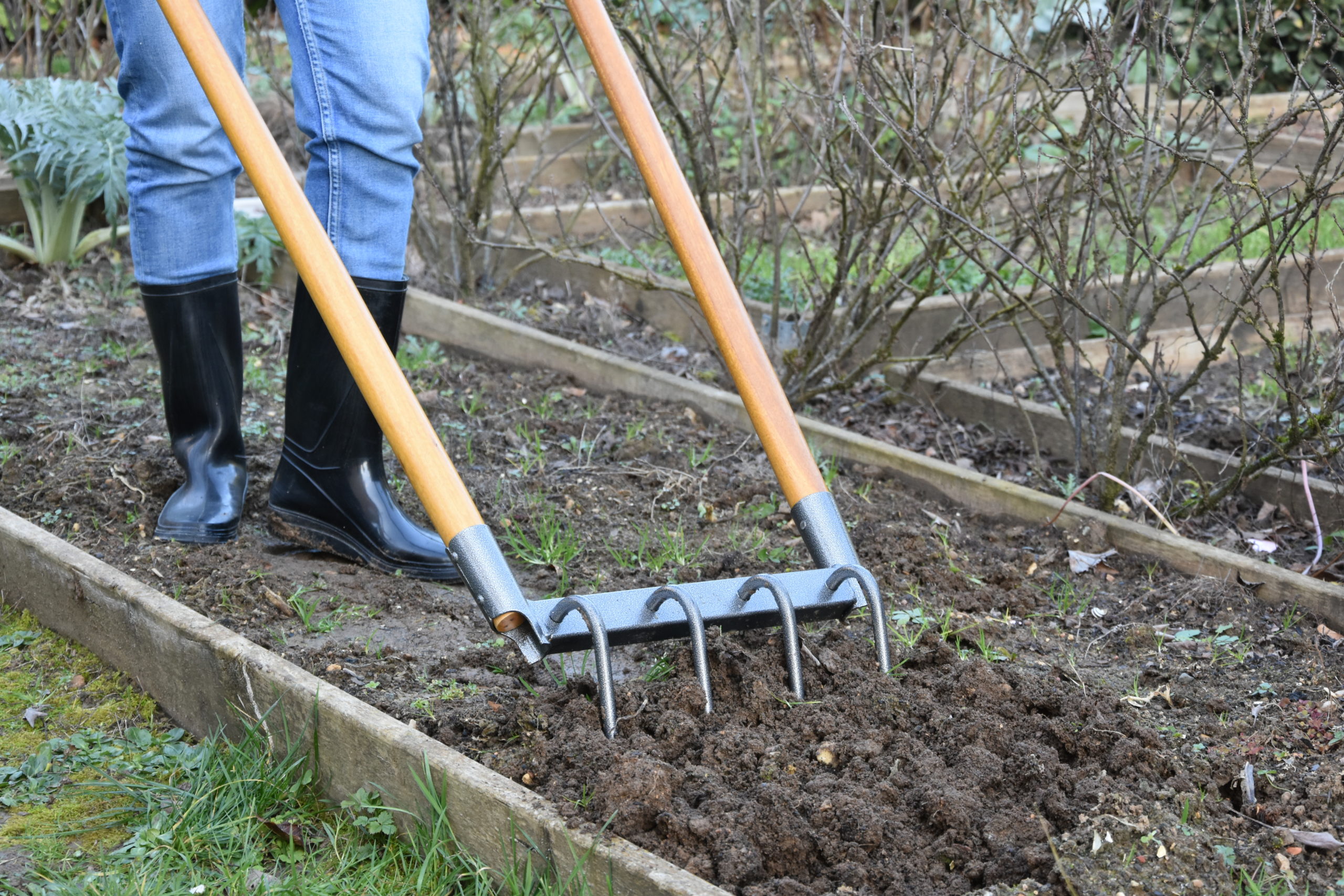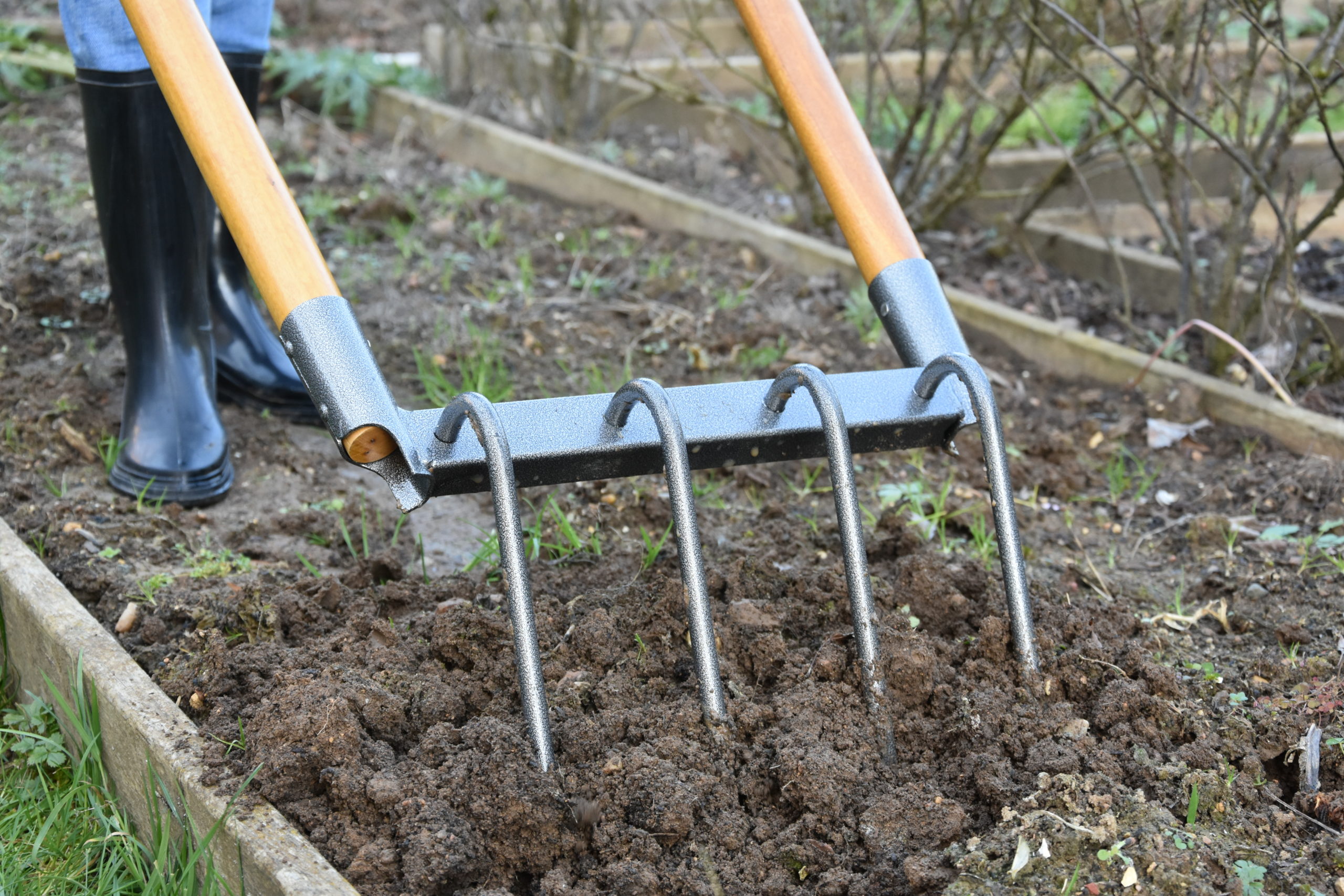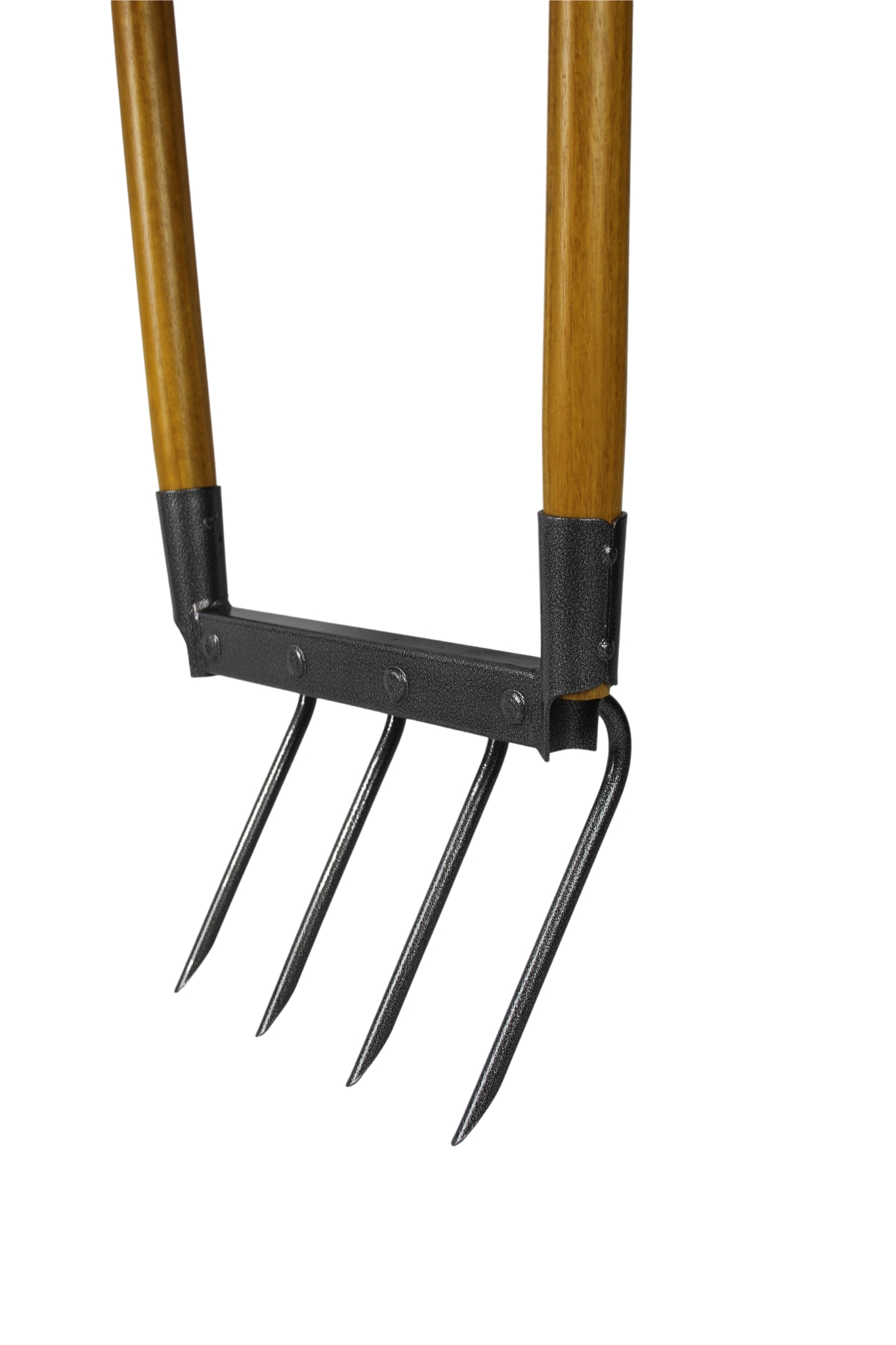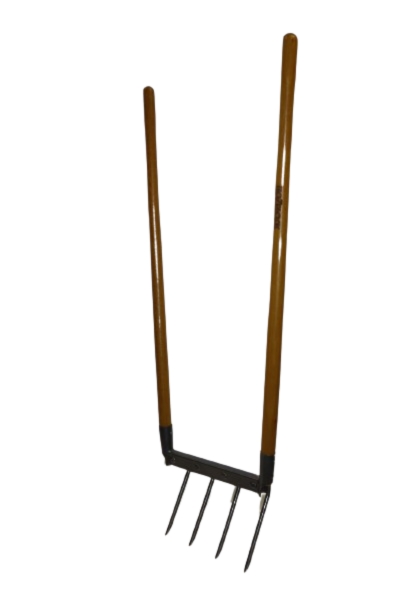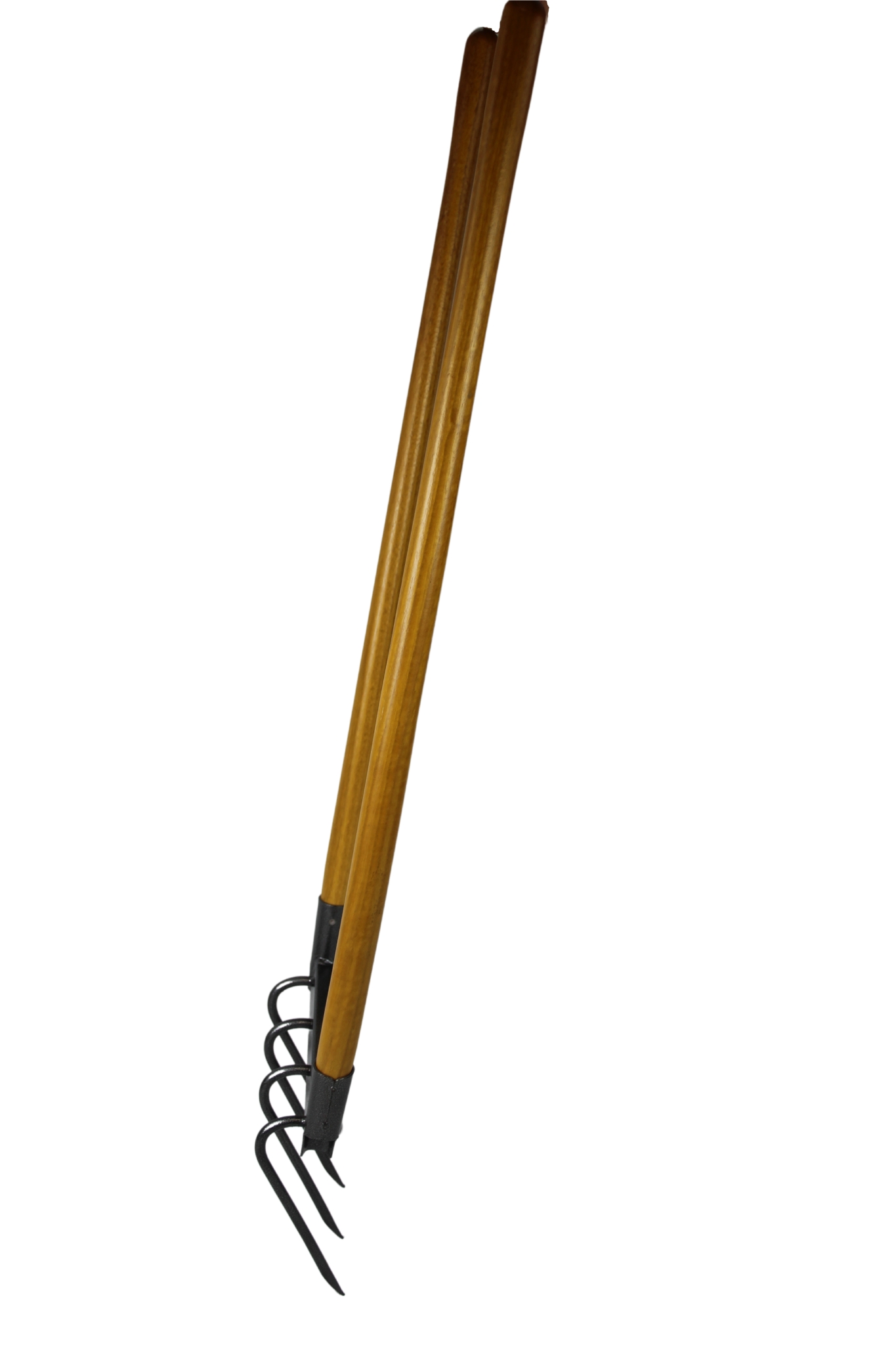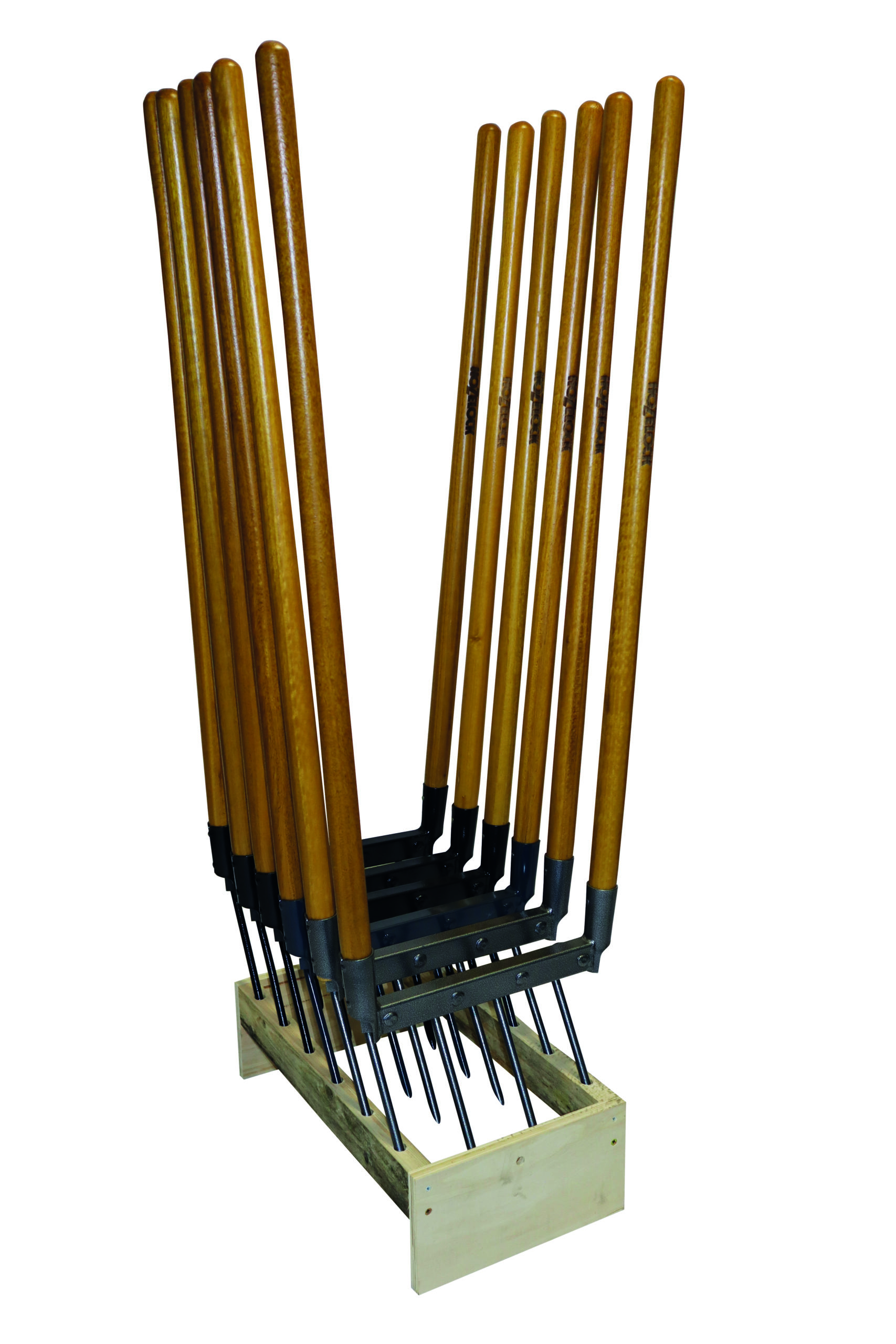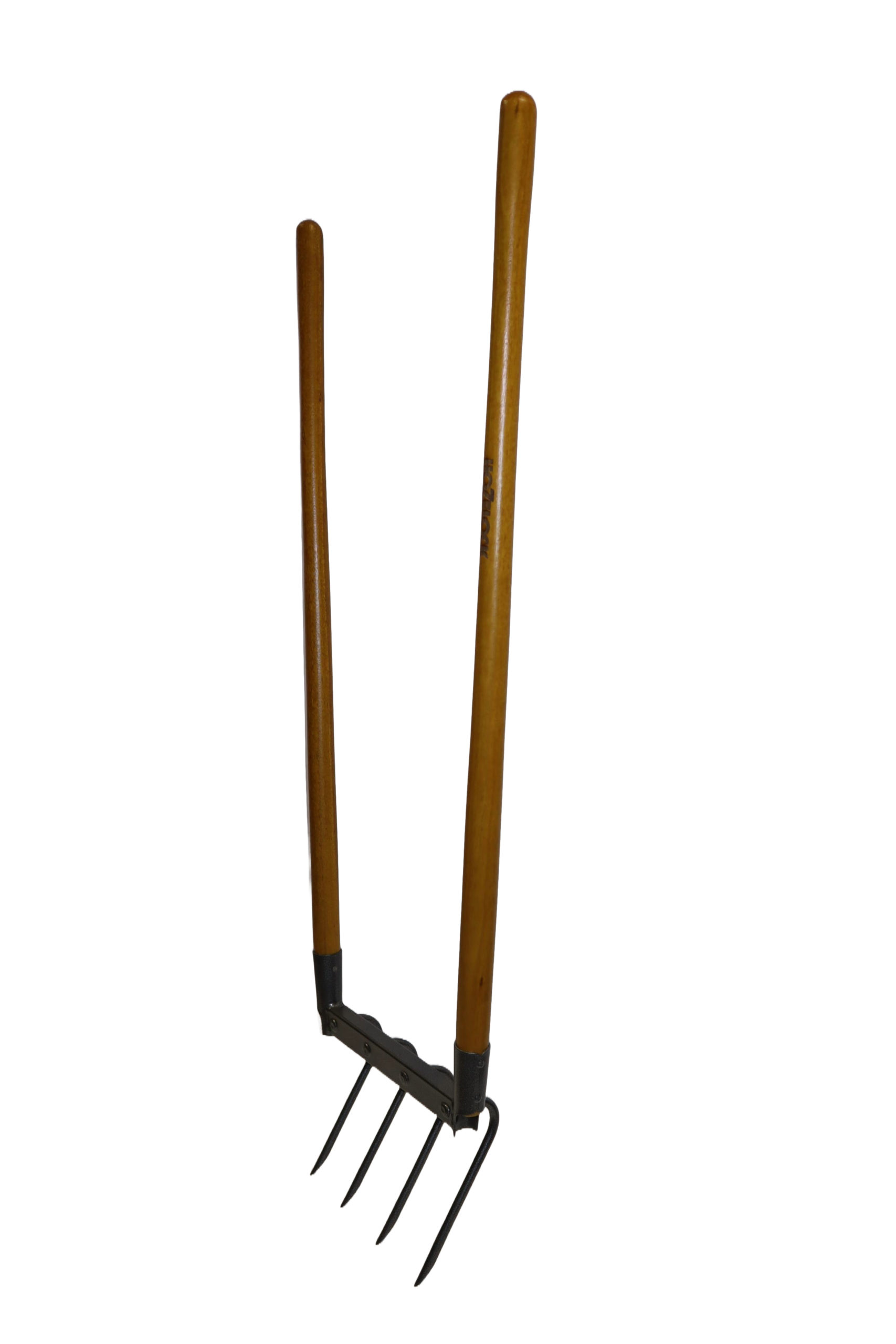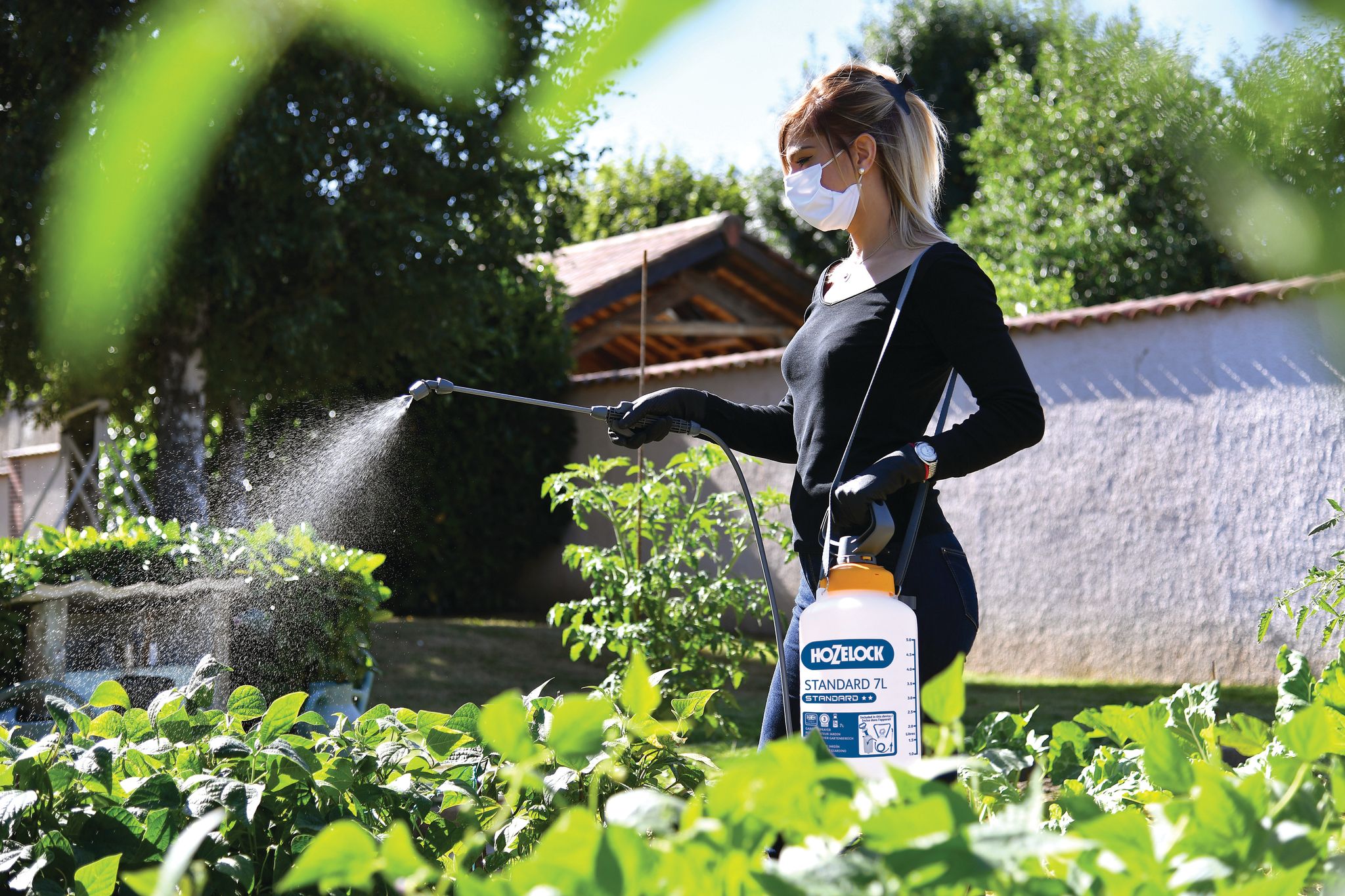The Multiple Purposes of the Eco Fork
Aerates and breaks up chunks of soil before planting.
Helps incorporate compost into the soil.
Picks up potatoes and other vegetables. Pulls up bulbs, also.
The Eco Fork is the perfect gardening tool for naturally fertilising your garden and enhancing soil biodiversity.
It creates small holes in the soil, allowing oxygen and water to penetrate deeper, thus providing more nutrients to the roots of your plants.
Why Choose the Eco Fork?
Curved Tine Design: The unique curved design of the tines increases the leverage effect, making the Eco Fork easier to use.
This innovative feature allows you to keep your body upright, eliminating the need to bend and reducing the risk of back strain.
Natural Soil Fertilisation: By aerating the soil, the Eco Fork helps deliver essential nutrients to plant roots, promoting healthy and robust plant growth without chemical fertilisers.
Enhanced Soil Biodiversity: The Eco Fork supports a thriving soil ecosystem by preserving and enhancing soil biodiversity, essential for sustainable gardening.
Improved Oxygen and Water Penetration: The small holes created by the Eco Fork ensure that oxygen and water reach deeper into the soil, improving plant health and resilience.
Make gardening easier and more eco-friendly with the Eco Fork, the ideal tool for maintaining a healthy and vibrant garden.
Its ergonomic, curved design not only simplifies soil aeration but also protects your back, making it a must-have for gardeners of all levels.
Improved Oxygen Flow:
- Aeration increases the amount of oxygen available in the soil. Roots need oxygen to respire and grow. Improved oxygen flow promotes healthier root development and increases the plant’s ability to absorb nutrients.
Enhanced Water Absorption:
- Aerated soil allows water to reach deeper into the root zone rather than running off the surface. This ensures that water is readily available to the roots, promoting consistent moisture levels and preventing waterlogging.
Better Nutrient Uptake:
- When soil is aerated, it becomes easier for roots to access nutrients that are otherwise trapped in compacted soil. Aeration breaks up dense soil, allowing nutrients to move more freely and be absorbed by plant roots.
Organic Matter Decomposition:
- Aeration stimulates the activity of beneficial microorganisms in the soil, which decompose organic matter into essential nutrients like nitrogen, phosphorus, and potassium. These nutrients are vital for plant growth and health.
Nitrogen Fixation:
- Some soil bacteria, such as those in the genus Rhizobium, can fix atmospheric nitrogen into forms that plants can use. Aeration supports these bacteria by providing the oxygen they need to thrive.
Improved Soil pH Balance:
- Aeration can help regulate soil pH by improving the distribution of lime and other pH-adjusting materials. A balanced pH ensures that nutrients are more readily available to plants.
The Eco Fork preserves soil biodiversity through several key mechanisms that support a healthy and balanced ecosystem within the soil. Here’s how it works:
Minimising Soil Disturbance
- Gentle Aeration: The Eco Fork creates small holes in the soil without turning it over completely, which minimises disruption to the existing soil structure and the habitats of beneficial organisms.
- Microbial Balance: By avoiding deep digging, the Eco Fork helps maintain the balance of aerobic and anaerobic microorganisms, each of which plays a crucial role in nutrient cycling and soil health.
Enhancing Microbial Activity
- Increased Oxygen Levels: Aeration introduces more oxygen into the soil, which supports aerobic microorganisms. These microorganisms help decompose organic matter into essential nutrients that plants can use.
- Moisture Regulation: Improved water penetration from aeration helps maintain consistent moisture levels, which is vital for microbial activity and the survival of various soil organisms.
Promoting Earthworm Activity
- Earthworm Habitat: The small holes created by the Eco Fork provide an optimal environment for earthworms. Earthworms aerate the soil further by creating tunnels, which improve soil structure and nutrient distribution.
- Nutrient Cycling: Earthworms break down organic matter, releasing nutrients back into the soil. They also excrete castings that are rich in nutrients and beneficial microorganisms.
Supporting Plant Root Health
- Root Development: Enhanced root growth from improved soil structure allows plants to establish stronger and more extensive root systems. Healthy roots exude compounds that attract beneficial microorganisms and promote symbiotic relationships.
- Symbiotic Relationships: Plants with healthy root systems can form symbiotic relationships with mycorrhizal fungi, which help plants absorb nutrients more efficiently and contribute to soil health.
Reducing Chemical Dependency
- Natural Fertilisation: By promoting the natural decomposition of organic matter and the activity of beneficial organisms, the Eco Fork reduces the need for chemical fertilisers that can harm soil life.
- Chemical-Free Gardening: Maintaining a chemical-free garden supports a wider variety of soil organisms, including insects, fungi, and bacteria that contribute to soil biodiversity.
Maintaining Soil Structure
- Preventing Compaction: Regular aeration with the Eco Fork prevents soil compaction, which can suffocate soil organisms and reduce their habitats. Loose, well-aerated soil supports diverse microbial and invertebrate communities.
By integrating these practices, the Eco Fork helps create and maintain a thriving, biodiverse soil ecosystem that supports healthy plant growth and sustainable gardening practices.
How to Use
1.
Work backwards, so as not to trample on the soil.
2.
Place the ecological fork in front of you, holding the 2 handles vertically at the top.
3.
Apply pressure with your foot to drive the tines into the ground.
4.
Move back and forth using the two handles.
5.
Pull the handles backwards to lift the soil, keeping your back straight.
6.
Step back and repeat the same movement.














